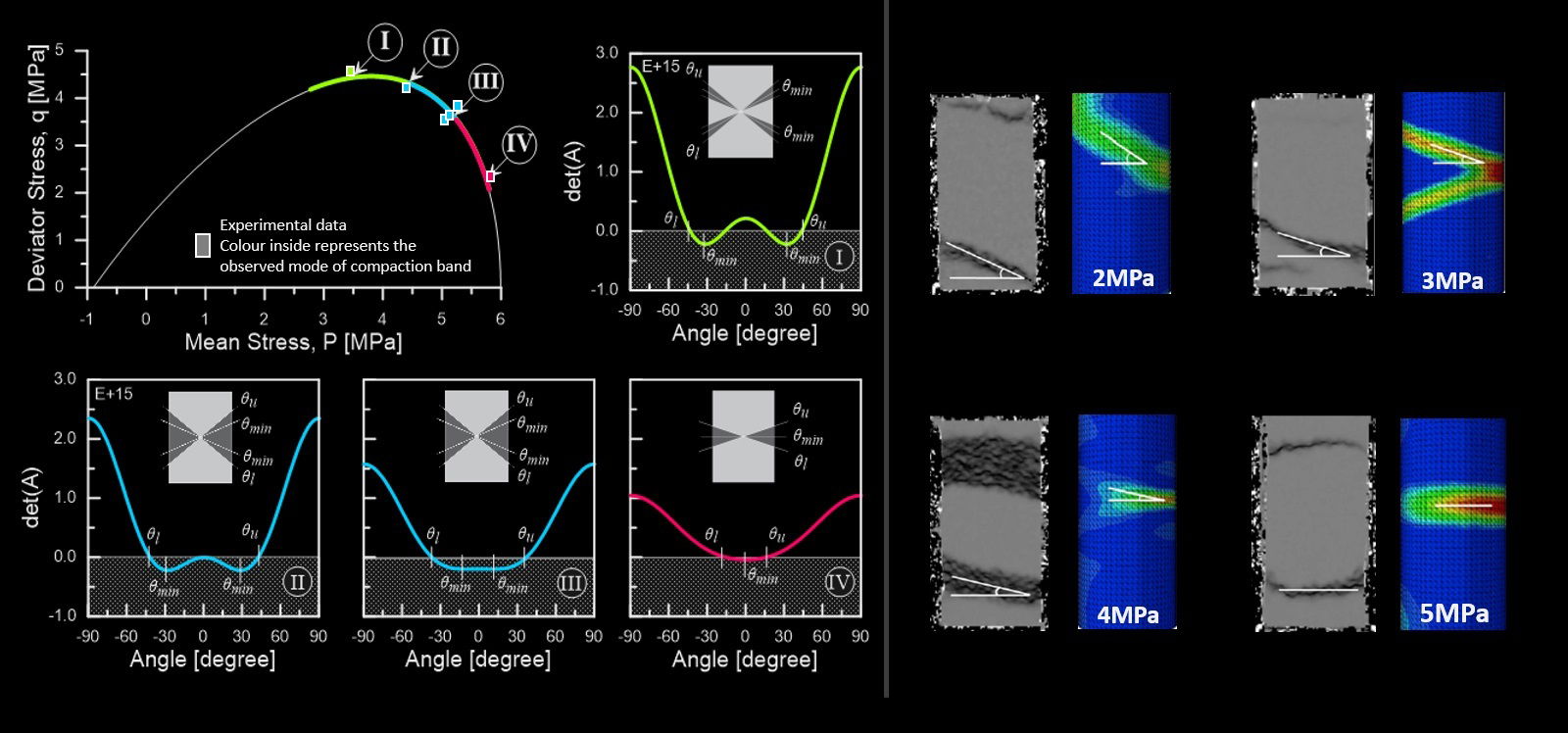Simulation of localized compaction in Tuffeau de Maastricht based on evidence from X-ray tomography

Deformation experiments with concurrent X-ray microtomography are used to characterize the mechanical properties of a high-porosity carbonate rock from Central Europe (the Tuffeau de Maastricht). Evidence of deformation behavior and pressure-dependent strain localization for this rock are taken into account to define the parameters of an elastoplastic constitutive law with competing hardening and softening mechanisms. Full-field data regarding the compaction localization regime have been used to identify a compromise between compaction hardening and structure deterioration. It was shown that by placing emphasis on the destructuration behavior it was possible to reproduce features such as the elongation of the deformation plateau emerging during compaction band formation, as well as the pressure-dependent inclination of the ensuing compaction bands. Most notably, the comparison between measurements and simulations showed that the strategy here used to constrain the model parameters allows a satisfactory depiction of both the macroscopic deformations and the portion of sample volume across which the compaction zones develop and propagate. These results point out the major benefits of parameter calibration strategies accounting synergistically for global measurements and spatially-distributed deformations, especially in the presence of constitutive laws meant to replicate compaction localization.
Download from researchgate.net or sciencedirect.com